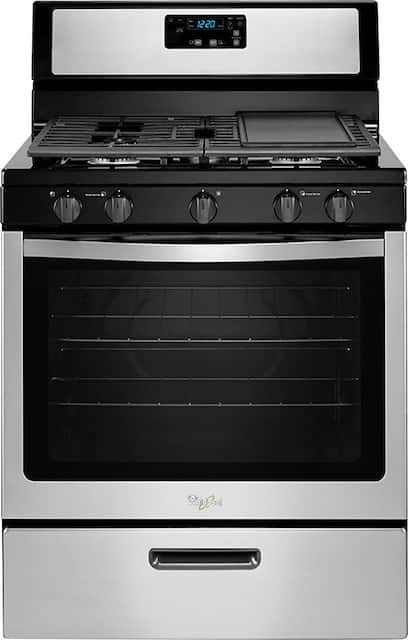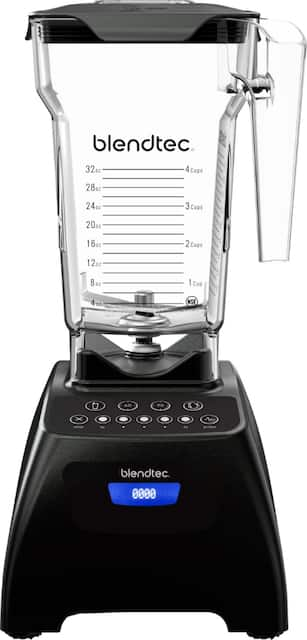SpeedHeat™ Burners
Generate the high heat needed for rapid boiling, searing and frying with multiple Power™ burners that offer up to 15,000 BTUs.
8,000 BTU Middle Burner
Maximize your cooktop’s usable space with five burners, including a middle burner for added flexibility. With up to 8,000 BTUs, you’ll have enough power to cook your favorite dishes while using the rest of the burners for other tasks.
Full-Width Cast-Iron Grates
Cast-iron grates cover nearly the whole cooktop surface, giving you the flexibility to easily move heavy pots and pans to optimal cooking locations. The grates are dishwasher-safe, and their satin finish resists wear and tear.
Large Oven Window
The large window allows for a clear view of the oven interior. Monitor cooking progress without opening the door, keeping oven temperatures steady and undisturbed.
Under-Oven Broiler
Perfectly toast a pan of garlic bread and melt cheese on top of casseroles. It’s large enough to broil an entire rack of your favorite foods. The full-width, drop-down door design spans the range from side to side, creating enough space for all your broiling needs.
Griddle (Included)
This dishwasher-safe griddle offers you more cooking area and flexibility while keeping the rest of the burners free to cook the rest of your meal. Now you can grill vegetables, fajitas and other favorite foods quickly and easily on the cooktop.
Upswept, Porcelain SpillGuard™ Cooktop
Enjoy easier cleanup with the upswept SpillGuard™ cooktop. Its raised edges help contain spills, while the smooth porcelain surface makes wiping up messes easy.
Recessed Cooktop
Provides a sleeker profile by lowering the level of the grates and also helps to keep spills from dripping off the cooktop.
5,000 BTU AccuSimmer® burner
The 5,000-BTU AccuSimmer® burner allows for precise temperature control that is perfect for melting chocolate or simmering sauces. When using the AccuSimmer® burner, power is reduced to deliver better control and lower temperatures.
Adjustable Oven Racks
Two adjustable oven racks can be moved into different positions to better accommodate almost any size of cookware, so you can get your whole meal done at the same time. Use one of the full-width oven racks in the under-oven broiler to easily broil favorites.
Control Lock
Disables the control panel to avoid unintended use or other changes to your cooking settings.
Oven Light
Provides the illumination you need to see inside your oven whether the door is opened or closed. The light is controlled with an on/off switch.











by Larry
This is a basic gas range and that’s what we wanted. We’ve only begun using it so I can’t attest to its longevity but we love the way its laid out with knobs on the front.
by Jack
We have had the stove for 30 days. No problems easy to use.
by Pops
Installed this stove in my camp in Maine. Converted to propane with included parts.
by Steve
Great product and really great service do recommend.
by Clint
i love this new whirpool stove- ease to use. and the gill i am now to make my pan cakes, eggs, baccon etc.
by Brian
Very heavy grates much better than any other one we found in white.